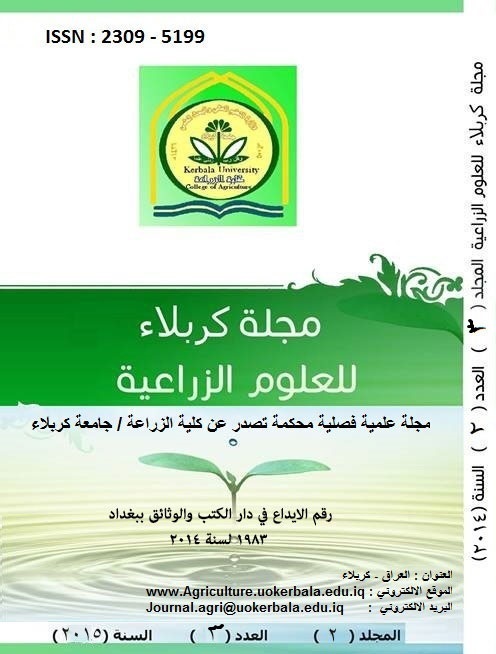Different Isolate Comparison of Alternaria alternata in their pathogenisity ability and molecular Diagnosing
DOI:
https://doi.org/10.59658/jkas.v2i3.505Abstract
Series of Laboratory experiment were conducted at the Department of plant protection ,College of Agriculture ,University of Kerbala. Fours fungal isolate designated here after by AM1 , AM2 , AB and AK of Alternaria alternata were studied . show that more pathogenic isolate was AM2 , germination percentage of the cress seeds and tomatoes was 0.0% for both , inhibition percentage was 100%. Then , in A.B isolate, germination percentage of the cress seeds was 4.4% and tomatoes 0.0% and inhibition percentage was 49.97% , 100% respectively. Then ,in A.M1 isolate, germination percentage of the cress seeds and tomatoes were 8.86% and 73.33% respectively, while the inhibition percentages of the cress seeds and tomatoes were 89.87% 22.9% respectively. The less pathogenic isolate was AK , the germination percentages of the cress seeds and tomatoes were 60.0% and 83.66% respectively and the inhibition percentages of the cress seeds and tomatoes were 31.42% and 12.12% respectively. where other isolate were less pathogenitic on the seed .these isolates were diagnosed by using PCR technique which were molecularly similar.
Downloads
Published
How to Cite
Issue
Section
License
Copyright (c) 2015 Copyright (c) 2024 is the Author's article. Published by the Journal of Kerbala for Agricultural Sciences under a CC BY 4.0 license

This work is licensed under a Creative Commons Attribution 4.0 International License.
Licensing Terms
All articles are published under a Creative Commons License and will be directed to the Creative Commons Attribution 4.0 International License (CC BY 4.0) That permits use, distribution, and reproduction in any medium, provided the original work is properly cited. This license also allows the work to be used for commercial purposes.
Use by both non-commercial and commercial users
This content is licensed under a Creative Commons Attribution 4.0 International (CC BY 4.0) license, permitting use by both non-commercial and commercial users. Individual users may access, download, copy, display, and redistribute the articles to colleagues, as well as adapt, translate, and text- and data-mine the content, subject to the following conditions:
- The author's moral rights, including the right of attribution and the right to protect their work from derogatory treatment, are respected.
- Where content in the article is identified as belonging to a third party, users must ensure that any reuse complies with the copyright policies of the owner of that content.
- If the article content is reused for research or educational purposes, users should maintain a link to the appropriate bibliographic citation, including the DOI and a link to the published version on the journal's website.

